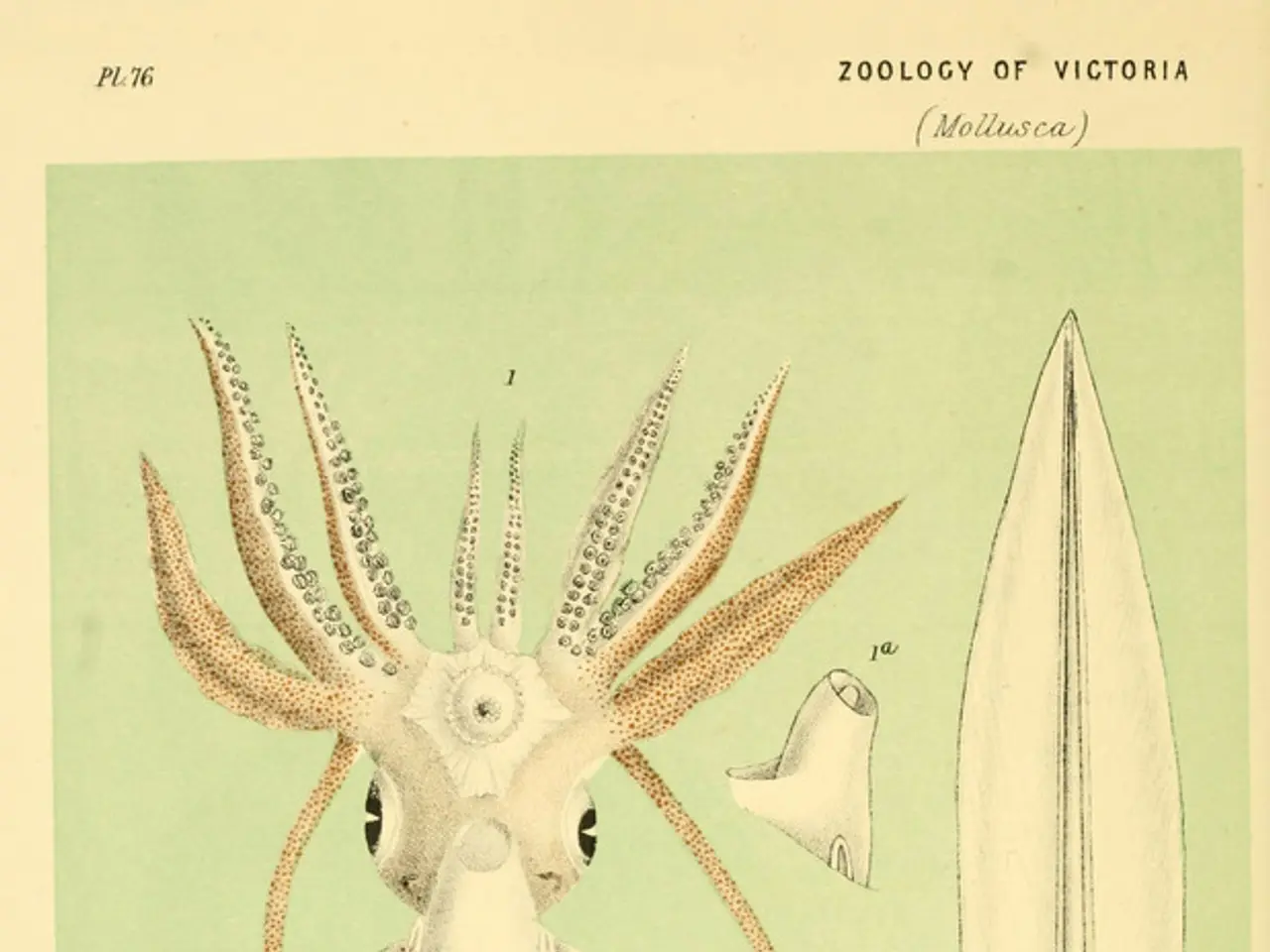Giant squid filmed in its native environment for the first time
First Live Footage of a Colossal Squid Captured in the Southern Atlantic Ocean
On March 9, the U.S.-based Schmidt Ocean Institute's research vessel, Falkor, made a groundbreaking discovery in the deep waters of the southern Atlantic Ocean. The team captured the first live footage of a colossal squid, a species known for its massive size, in its natural oceanic environment.
The filmed squid was a teenage squid, not a baby or a fully grown adult, as scientists have concluded after careful examination. Despite its name, colossal squids are not apex predators. Instead, they prey on large sub-Antarctic fish, including Chilean sea bass and other squids, using their unique set of tentacles with sucker-covered arms and large immobile hooks midway along their length.
The colossal squid, the world's most massive squid species, was first identified 100 years ago using remains found in a sperm whale's stomach. Since then, there have been several encounters with this elusive creature, such as the one in 1981 when a nearly 17-foot colossal squid was inadvertently caught by the Soviet trawler Eureka.
In 2003, a dead colossal squid, 20 feet long, was found floating off New Zealand's south coast. Another significant encounter occurred in 2007 when a living colossal squid, 30 feet in length, was accidentally ensnared and fatally injured by a fishing boat in the Ross Sea, near Antarctica. This specimen appeared to be a fully grown adult.
Living in the twilight zone of the sea, colossal squids often appear transparent to avoid predators and ambush prey. They have the largest eyes on the planet, allowing them to spot whale-sized predators from a considerable distance.
The common perception of the deep sea and its denizens is often skewed toward the frightening and ominous. However, thanks to some clever engineering, we are finding out that deep-sea animals are fragile and beautiful. The Falkor research vessel, known for its prolific discoveries of marine life, continues to shed light on the mysteries of the deep sea, one discovery at a time.
In a related development, during another mission, SuBastian, an underwater robotic explorer, caught a glimpse of the glacial glass squid, another species that had never been documented living in its presumed natural habitat. The glacial glass squid was seen gracefully dangling its arms above its head, a pose common to other glass squids, at a depth of 2,250 feet.
The footage provides an opportunity to test theories about the behavior and biology of the colossal squid species. As research continues, we can expect to learn more about these fascinating creatures and the role they play in the complex ecosystem of the deep sea.
Read also:
- Peptide YY (PYY): Exploring its Role in Appetite Suppression, Intestinal Health, and Cognitive Links
- Toddler Health: Rotavirus Signs, Origins, and Potential Complications
- Digestive issues and heart discomfort: Root causes and associated health conditions
- House Infernos: Deadly Hazards Surpassing the Flames








